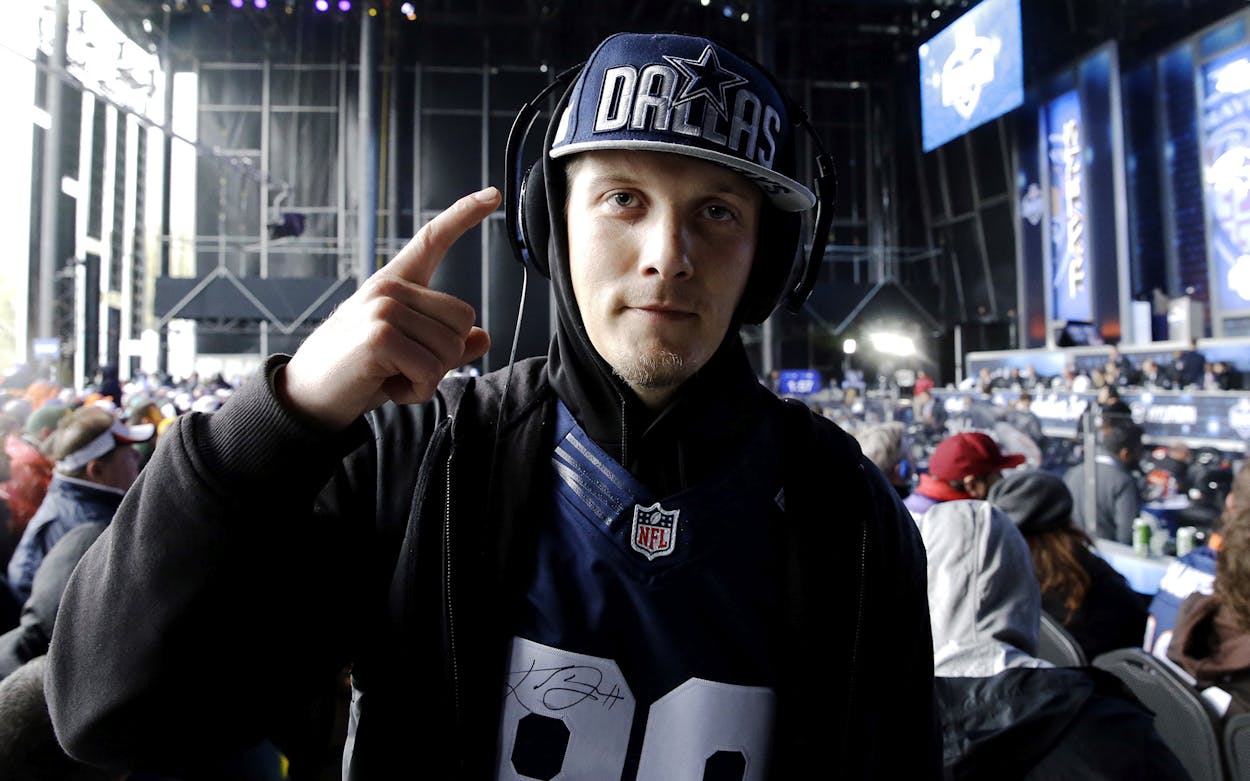For decades, the NFL Draft was an intimate affair. By NFL standards, anyway, hosting the event in venues like Radio City Music Hall (capacity 6,000, where it was held from 2004-2014) or the Auditorium Theater at Roosevelt University in Chicago (capacity 3,900, where it spent the two subsequent years) is downright exclusive. That changed last year, when the Draft—which had spent fifty years in New York before its move to Chicago—went to Philadelphia, where the event was no longer exclusive or intimate. Instead, the city converted space outside of its famous Philadelphia Museum of Art into a massive 250,000 person festival during Draft weekend.
Moving the NFL Draft outside was a major shift in how it worked, and surprisingly effective. Rather than merely being a show in which future NFL stars and busts alike receive new jerseys and Commissioner Roger Goodell got booed by everyone in attendance, the 2017 event was a capital-E Experience. Fans were able to ride down a zip line the length of a football field. They could experience an NFL-branded virtual reality program. They could take photos of the Lombardi Trophy awarded to Super Bowl winners, check out the NFL Museum that pops up at events like Houston’s Super Bowl LI, participate in field goal kicking challenges, and more. Tickets were free, and everybody was welcome—but the additional activities also meant that fans who attended the event could go through the whole experience without really watching anyone get drafted.
Today, the NFL announced that it would be moving the production yet again: this time, to Dallas (well, Arlington) for 2018, hosting the event at AT&T Stadium. The move makes sense for several reasons, chief among them that the Dallas stadium combines the best of both worlds, as far as the NFL Draft is concerned: It can stage-manage a television production that’ll play well to a live audience, where all of the 100,000-plus people who paid for parking by the stadium also have sight-lines, so they can boo Goodell in unison and cheer whoever the Cowboys pick all at once. It’ll be easy enough to put the same sort of fan experience together as they created in Philadelphia, and ensure that there’s a huge crowd for the Draft itself (even if AT&T Stadium maxes out at a mere 100,000, rather than the quarter-million who turned out in Philadelphia). The move will also generally further the NFL’s goal of continuing to become a year-round entertainment company, rather than a seasonal sport.
There are still open questions, of course—the specifics of how or if the fan experience will differ from that in Philadelphia or from the Super Bowl in Houston (or Super Bowl LII in Minneapolis this winter) are unclear. But the idea that the NFL Draft can be a major in-person and television event, like the Super Bowl, has long been a part of the league’s strategy (see also: the scouting combine, which may be next to hit the road if this works out). Moving to Dallas fits that perfectly.








